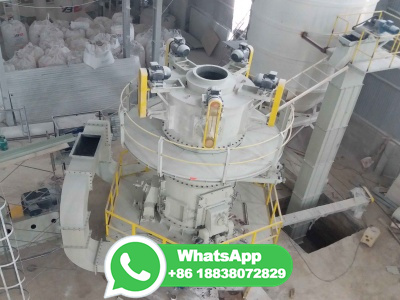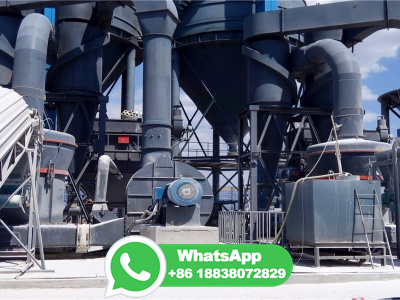
Figure 2: Coal rankings depend on energy content, measured as gross calorific value (how much energy is released from combustion) and carbon content that can be burned (percentage of fixed carbon). Anthracitic coal (orange) is the highest quality coal, with high energy and carbon content.
WhatsApp: +86 18203695377
There are two main phases in coal formation: peatification and coalification. Bacterial activity is the main process that creates the peat during peatification. Increasing temperature and pressure from burial are the main factors in coalification. [2] To form coal, the following steps are followed (Figure 2 illustrates these steps): [5] [6]
WhatsApp: +86 18203695377
Download : Download highres image (528KB) Download : Download fullsize image; Fig. 1. Coal bed methane production process. ... ultimately resulting in the formation of coal [3]. This process occurs gradually over an extensive timeframe spanning millions of years. Methane and carbon dioxide are two of the many by product gases that are ...
WhatsApp: +86 18203695377
Coal is formed from the remains of plants, by a process called coalification. The whole process starts with the remains of dead plants, which must be buried in an oxygenpoor or oxygenfree environment, to avoid complete decomposition. Usually, these are swamptype environments. The coalification process takes place over millions of years.
WhatsApp: +86 18203695377
Question: Question 36 2 pts The process of coal formation occurs best in: The Ocean The tips of mountains River deltas and costal plains The air Lakes and Ponds Show transcribed image text There's just one step to solve this.
WhatsApp: +86 18203695377
The image above is specifically of an open coal mine. Types of Coal. The coal that is available can be differentiated into three types based on their carbon content which are as follows: Lignite. It is the coal with the lowest carbon content. The carbon content is only about 6070 %. It is formed during the younger stages of coal formation and ...
WhatsApp: +86 18203695377
Geological Educational Resources for K16. In 1996, the Education Committee of the Kentucky Geological Survey, in conjunction with the Kentucky Society of Professional Geologists, established the Earth Science Education Network (ESEN).
WhatsApp: +86 18203695377
Coal is a combustible black or brownishblack sedimentary rock, formed as rock strata called coal is mostly carbon with variable amounts of other elements, chiefly hydrogen, sulfur, oxygen, and nitrogen. Coal is a type of fossil fuel, formed when dead plant matter decays into peat and is converted into coal by the heat and pressure of deep burial over millions of years.
WhatsApp: +86 18203695377
In the formation process of coal measure strata, if there were magmatic activities or volcanic activities, there would exist corresponding distributions of volcanic rocks and pyroclastic rocks. ... Characterization on anisotropic fractures of coal and rocks by computed Xray tomography based on image segmentation. Coal Geology Exploration, 37 ...
WhatsApp: +86 18203695377
The first step is to put the coal in a crushing machine to turn it into a fine powder. Next, the powder is placed in a container called a retort where it is heated to about 2,700 degrees Fahrenheit. This causes the carbon in the coal to turn into gas. The gas is then cooled and condensed into a liquid.
WhatsApp: +86 18203695377
All coals, regardless of whether they are caking or coking coals, leave a solid carbonaceous residue at the end of the carbonization process. Chars, if heattreated to extreme temperatures, ≥2500 °C, do not form graphite, while cokes do. That is, chars are nongraphitizable, while cokes are graphitizable [A]. Type.
WhatsApp: +86 18203695377
Learn About Formation Of Fossil Fuels (Coal and Petroleum) Fossil fuels are nonrenewable resources used to create energy. They are available in coal, oil, and natural gas. Fossil fuels are obtained from the remains of plants and animals. The process of formation of fossil fuels involves the burial of dead organisms under sedimentary rocks.
WhatsApp: +86 18203695377
The process of coal formation in thick peat deposits developed in places where the following conditions prevailed: slow, continuous subsidence; the presence of levees, beaches and bars that provided protection from frequent flooding; and a limited supply of incoming sediment that would have interrupted peat formation. ... Coal burning image ...
WhatsApp: +86 18203695377
The rapid burial of massive volumes of plant material torn loose during the Flood accounts for today's extensive, buried coal layers. Anyone with mud, sticks, and fire can make a coallike material called charcoal. 5 Geological coal and charcoal are both black, but coal seams have tiny layered structures.
WhatsApp: +86 18203695377
This chapter discusses coal formation, coal types, and coalification the progression through the ranks of coal. ... Throughout this 'coalification' process, coal chemistry and other properties change. As shown in Table, Given ... Download fullsize image; Pyrite filling a preserved plant cell in fusinite (a) and finely ...
WhatsApp: +86 18203695377
Coal is formed when dead plant matter submerged in swamp environments is subjected to the geological forces of heat and pressure over hundreds of millions of years. Over time, the plant matter transforms from moist, lowcarbon peat, to coal, an energy and carbondense black or brownishblack sedimentary rock.
WhatsApp: +86 18203695377
It contributes to 25% of the greenhouse gas emissions and 40% of the total fossil fuel emissions. China is the largest importer and consumer of coal. (Image Will be Updated Soon) Formation of Coal. Coalification is a process in which dead matters like plants and vegetation convert into coal over a prolonged period of time.
WhatsApp: +86 18203695377
Find Petroleum Natural Gas Formation stock images in HD and millions of other royaltyfree stock photos, illustrations and vectors in the Shutterstock collection. Thousands of new, highquality pictures added every day. ... coal formation process, Formation of coal vector illustration, gas and petroleum process, what is coal use for explanation ...
WhatsApp: +86 18203695377
Examples of unconventional fossil fuels include oil shale, tight oil and gas, tar sands (oil sands), and coalbed methane. Figure e : Conventional oil and natural gas deposits are trapped beneath impervious rock (gray). Conventional natural gas may be associated with oil or nonassociated. Coalbed methane and tight gas found in shale and ...
WhatsApp: +86 18203695377
Coal formed millions of years ago when the earth was covered with huge swampy forests where plants giant ferns, reeds and mosses grew. As the plants grew, some died and fell into the swamp waters. New plants grew up to take their places and when these died still more grew. In time, there was thick layer of dead plants rotting in the swamp.
WhatsApp: +86 18203695377
There are four major types (or "ranks") of coal. Rank refers to steps in a slow, natural process called "coalification," during which buried plant matter changes into an ever denser, drier, more carbonrich, and harder material. The four ranks are: Anthracite: The highest rank of coal. It is a hard, brittle, and black lustrous coal, often referred to as hard coal, containing a high ...
WhatsApp: +86 18203695377
Abstract. The transformation of vegetable matter into peat and coal is commonly regarded as proceeding in two steps, called the biochemical and physicochemical stage of coalification (Stach et al. 1982), respectively. Other terms, such as "first and second phase" (Mackowsky 1953), or "diagenetic and metamorphic stage" (Teichmüller 1962 ...
WhatsApp: +86 18203695377
The mechanism behind one of the first stages of coal creation may not be what we thought it was, according to a team of researchers who found that microbes were responsible for coal formation...
WhatsApp: +86 18203695377
Contents Coal Classification Historical significance Chemical composition Physical properties Mining and processing of coal Extraction techniques (surface and underground mining) Processing methods (cleaning, crushing, grading, etc.) Coal Composition Coal Formation Occurrence of Coal Coal Characteristics and Properties Intensity
WhatsApp: +86 18203695377
The fragmentation of coal produces abundant coal gases and is presumed to be the defining characteristic of coal and gas outbursts. Knowing the mechanism of these catastrophic hazards is one of the most important breakthroughs in mining geology. In the outburst process, coal spallation represents a unique failure type and typically leaves behind a spallation area (with a series of fracture ...
WhatsApp: +86 18203695377
Chemistry Coal and Petroleum Formation Of Fossil Fuels Formation of Coal How is Coal Formed? Coal is fossil fuel or fuel that comes from the remains of prehistoric plants or animals. The formation of coal occurs over millions of years via a process known as carbonation.
WhatsApp: +86 18203695377
It takes millions of years to create and as a nonrenewable resource, there is only a finite amount.
WhatsApp: +86 18203695377
The genesis classification of coal pore is beneficial to understand coal formation environment and gas generation mechanism. With the SEM observation of coal pores, previous ... 3D CT images reconstruction process and result; (e) Histogram depicting results of pore distribution and volume percentage in different range from FIBSEM. (a ...
WhatsApp: +86 18203695377
Browse 10,874 authentic coal formation stock photos, highres images, and pictures, or explore additional coal mining or coal washing stock images to find the right photo at the right size and resolution for your project.
WhatsApp: +86 18203695377
(Image credit: VectorMine via Getty Images) Not all peat transforms into coal; some erodes or dries out. To begin the process of coalification, the peat must be covered by something inorganic, such as silt from a wide river delta.
WhatsApp: +86 18203695377
Coal is formed from plant matter through a process spanning millions of years. Show this process by labeling the following image with the source material, intermediate product, and final product. A bituminous coal B lignite C peat. left to right: peat, lignite, bituminous coal.
WhatsApp: +86 18203695377
Description: Coalification is a geological process of formation of materials with increasing content of the element carbon from organic materials that occurs in a first, biological stage into peats, followed by a gradual transformation into coal by action of moderate temperature (about 500 K) and high pressure in a geochemical stage. Notes:
WhatsApp: +86 18203695377
Coal is the second most important fuel currently used by mankind, accounting for over 25% of the world's primary energy supply. It provides 41% of global electricity supplies and is a vital fuel or production input for the steel, cement, and chemical industries. However, coal is a fossil fuel formed from organic material by geological ...
WhatsApp: +86 18203695377
The process of coalification involves chemical and physical changes to organic and inorganic compounds. Coalification continues to the rank achieved by the highest heating during burial history. Once a coal achieves a certain rank, the process cannot be reversed. Learn more about heat, time, pressure, and coalification.
WhatsApp: +86 18203695377
Coal formation is a continuing process (some of our newest coal is a mere 1 million years old). Today, in areas such as the Great Dismal Swamp of North Carolina and ia, the Okefenokee Swamp of Georgia, and the Everglades in Florida, plant life decays and subsides, eventually to be covered by silts and sands and other matter. Perhaps millions
WhatsApp: +86 18203695377